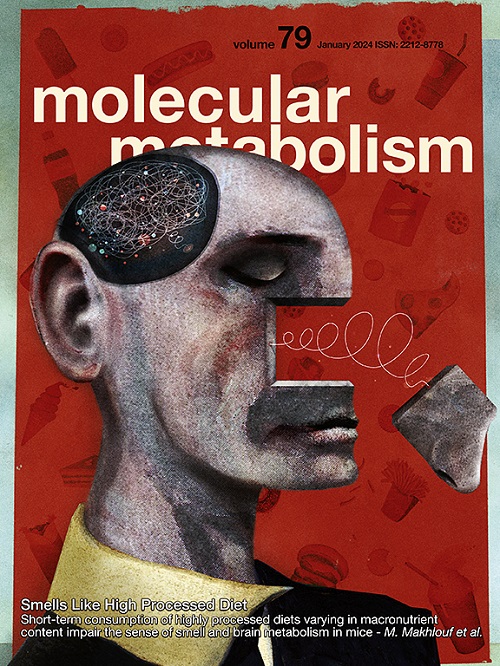Physical training reduces cell senescence and associated insulin resistance in skeletal muscle
IF 6.6
2区 医学
Q1 ENDOCRINOLOGY & METABOLISM
引用次数: 0
Abstract
Background
Cell senescence (CS) is a key aging process that leads to irreversible cell cycle arrest and an altered secretory phenotype. In skeletal muscle (SkM), the accumulation of senescent cells contributes to sarcopenia. Despite exercise being a known intervention for maintaining SkM function and metabolic health, its effects on CS remain poorly understood.
Objectives
This study aimed to investigate the impact of exercise on CS in human SkM by analyzing muscle biopsies from young, normal-weight individuals and middle-aged individuals with obesity, both before and after exercise intervention.
Methods
Muscle biopsies were collected from both groups before and after an exercise intervention. CS markers, insulin sensitivity (measured with euglycemic clamp), and satellite cell markers were analyzed. Additionally, in vitro experiments were conducted to evaluate the effects of cellular senescence on human satellite cells, focusing on key regulatory genes and insulin signaling.
Results
Individuals with obesity showed significantly elevated CS markers, along with reduced expression of GLUT4 and PAX7, indicating impaired insulin action and regenerative potential. Exercise improved insulin sensitivity, reduced CS markers, and activated satellite cell response in both groups. In vitro experiments revealed that senescence downregulated key regulatory genes in satellite cells and impaired insulin signaling by reducing the Insulin Receptor β-subunit.
Conclusions
These findings highlight the role of CS in regulating insulin sensitivity in SkM and underscore the therapeutic potential of exercise in mitigating age- and obesity-related muscle dysfunction. Targeting CS through exercise or senolytic agents could offer a promising strategy for improving metabolic health and combating sarcopenia, particularly in at-risk populations.
体育锻炼可以减少骨骼肌细胞衰老和相关的胰岛素抵抗。
背景:细胞衰老(CS)是一个关键的衰老过程,导致不可逆的细胞周期阻滞和分泌表型改变。在骨骼肌(SkM)中,衰老细胞的积累导致了肌肉减少症。尽管运动是维持SkM功能和代谢健康的已知干预措施,但其对CS的影响仍知之甚少。目的:本研究旨在通过分析年轻、正常体重个体和中年肥胖个体在运动干预前后的肌肉活检,探讨运动对人类SkM中CS的影响。方法:两组在运动干预前后分别进行肌肉活检。分析CS标记物、胰岛素敏感性(用正糖钳测量)和卫星细胞标记物。此外,通过体外实验评估细胞衰老对人类卫星细胞的影响,重点关注关键调控基因和胰岛素信号传导。结果:肥胖个体CS标志物显著升高,GLUT4和PAX7表达降低,表明胰岛素作用和再生潜能受损。运动改善了两组患者的胰岛素敏感性,降低了CS标记物,激活了卫星细胞反应。体外实验表明,衰老通过降低胰岛素受体β-亚基,下调卫星细胞中的关键调控基因,并破坏胰岛素信号传导。结论:这些发现强调了CS在SkM中调节胰岛素敏感性的作用,并强调了运动在减轻年龄和肥胖相关肌肉功能障碍方面的治疗潜力。通过运动或抗衰老药物靶向CS可能为改善代谢健康和对抗肌肉减少症提供有希望的策略,特别是在高危人群中。
本文章由计算机程序翻译,如有差异,请以英文原文为准。
求助全文
约1分钟内获得全文
求助全文
来源期刊

Molecular Metabolism
ENDOCRINOLOGY & METABOLISM-
CiteScore
14.50
自引率
2.50%
发文量
219
审稿时长
43 days
期刊介绍:
Molecular Metabolism is a leading journal dedicated to sharing groundbreaking discoveries in the field of energy homeostasis and the underlying factors of metabolic disorders. These disorders include obesity, diabetes, cardiovascular disease, and cancer. Our journal focuses on publishing research driven by hypotheses and conducted to the highest standards, aiming to provide a mechanistic understanding of energy homeostasis-related behavior, physiology, and dysfunction.
We promote interdisciplinary science, covering a broad range of approaches from molecules to humans throughout the lifespan. Our goal is to contribute to transformative research in metabolism, which has the potential to revolutionize the field. By enabling progress in the prognosis, prevention, and ultimately the cure of metabolic disorders and their long-term complications, our journal seeks to better the future of health and well-being.
 求助内容:
求助内容: 应助结果提醒方式:
应助结果提醒方式:


